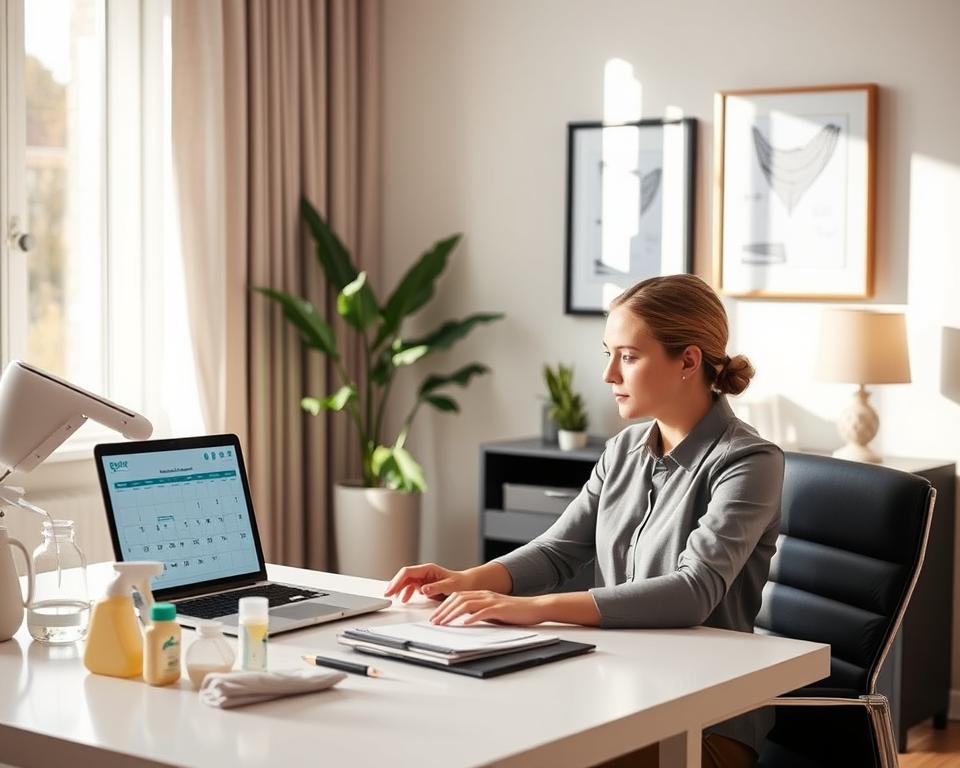Opulent Grand Cayman Getaways – Reserve Today
Visualize beginning your day with gentle surf sounds with the tropical sun greeting you outside. Grand Cayman offers luxury rentals that are more than just a place to stay. They redefine relaxation with their beachfront properties. Whether enjoying a morning coffee or exploring local cuisine, every moment is special. Countless travelers—over 100,000—have relied on these upscale stays for unforgettable moments.
Arranging your journey takes moments via online reservations for these premium homes. Indulge in opulence and relaxation; your dream beach resort escape is waiting.
Main Points
- Luxury rentals in Grand Cayman provide exclusive adventures.
- Choose from a variety of beachfront properties ideal for any traveler.
- Reserving via the internet guarantees ease and peace of mind.
- 100,000+ travelers have secured their high-end stays.
- Bask in the calm and charm of the Caribbean.
Explore the Magic of Grand Cayman
Grand Cayman is a top choice in the Caribbean, renowned for its scenic splendor and energetic ambiance. Pristine, powdery shores promise leisurely lounging and sun-filled hours. People from all walks of life flock here, eager to experience the island’s stunning views and warm climate.
The underwater world of Grand Cayman is equally captivating, with vibrant coral reefs ideal for snorkeling and diving. Scuba enthusiasts encounter abundant sea creatures near shore. The island’s relaxed atmosphere is ideal for both adventure and peace.
Grand Cayman presents diverse culinary options, ranging between informal shore-side spots and elegant dining rooms. Guests indulge in fresh seafood and island specialties with sea vistas. This combination of beautiful landscapes, delicious food, and welcoming vibes makes Grand Cayman a must-see destination.

Why Choose Grand Cayman for Your Next Getaway
Grand Cayman is a standout vacation spot, combining panoramic vistas with abundant marine wonders. Whether solo, duo, or family, it welcomes all. Whether you’re planning a family vacation or a romantic getaway, it provides experiences for every desire.
All travelers receive a tailor-made journey. Whether exploring lively reefs or tasting island cuisine, options abound for all interests. Kids and parents delight in sea tours and Turtle Centre trips, and duos can indulge in seaside candlelit meals. All of which makes it ideal for lasting recollections.
A top draw for Grand Cayman is its secure environment. It is considered one of the safest destinations in the Caribbean. This provides travelers with the assurance they need to fully enjoy their stay. The island’s beauty is matched by its secure environment, making it ideal for both relaxation and exploration.
High-End Rentals in Grand Cayman
When organizing a trip, you discover many upscale options. These range from lavish villas to refined condo rentals, suited to every guest profile. Every rental carries a special vibe and coastal panoramas.
Kinds of Accommodations
Guests craving standout stays find multiple paths:
- Villas: These spacious retreats offer a home-away-from-home feel, ideal for families or large groups.
- Condo Rentals: Ideal for travelers seeking proximity, these condos sit close to sights and eateries.
- Luxury Beachfront Properties: Offering dramatic sea views plus private shore entry for memorable visits.
Prime Rental Spots
Your choice of area can transform your trip.
- Seven Mile Beach: Known for powdery shores, this locale mixes fun and chill time.
- Rum Point: Side stepping to Rum Point brings laid-back views and placid bays.
- Georgetown: Georgetown blends tradition with modern conveniences for explorers.
Picture morning’s first light alongside soft surf melodies, while golden rays crown the sea. Coastal stays present such calm, granting exclusive relief. All high-end rentals focus on ultimate comfort. Enjoy open designs and refined touches for an elevated holiday.
Many homes boast private swimming spots, patio retreats, and immediate beach paths. This creates an ideal setting for relaxation or fun-filled days by the ocean. Visitors might dive into their private pool at dawn or wander the sands at dusk. It’s a truly unforgettable experience.
Whether it’s the breathtaking views or the upscale features that await, beachfront properties provide a luxurious escape. Those seeking an idyllic getaway will find that these oceanfront accommodations offer everything needed for a memorable stay.
Make the Most of Seven Mile Beach
Famed shorefront strip offers stunning sights and endless entertainment. It boasts not only luxurious seven mile beach condos but also various beach rentals for all types of travelers.
Premier Condo Picks
A selection of elite condos showcase prime features and sweeping vistas. The Ritz-Carlton and the Westin Grand Cayman are among the best, with spacious rooms and direct beach access. Booking a condo comes with perks like private balconies, kitchen facilities, and access to pools or spas. This makes it a convenient choice for travelers.
Water Activities at Seven Mile Beach
For water sports lovers, Seven Mile Beach is a dream come true. Options range between thrilling jet skis and relaxed paddleboards. Don’t miss snorkeling in crystal seas teeming with fish and reefs. Choose between self-guided rentals or expert-led dives. After a day of fun, relax on the beach or enjoy a drink at a nearby bar. Seven Mile Beach is the ideal spot for both relaxation and adventure.
Villas and Private Rentals in Grand Cayman
The island presents many villa options and secluded homes, suited to families or friends. Beyond generous layouts, they guarantee exclusive privacy. Guests can relax in opulent settings, taking in breathtaking views and enjoying top-tier amenities.
Opting for a private home delivers added perks beyond space. Benefit from tailored service by attentive property personnel. These rentals feature gourmet kitchens and expansive outdoor spaces, making them feel like home.
From shore-facing mansions to hidden hideaways, options abound. Choose the perfect villa matching your vision of a vacation haven.
After booking, you’ll uncover exclusive discounts on luxury stays. Discounts and promotional offers make luxury stays more affordable. Whether you’re after an elegant villa or a beachfront condo, these savings let you enjoy your dream getaway without breaking the bank.
Time-Sensitive Villa Deals
Grand Cayman’s properties often have limited-time offers that slash costs. These deals might include lower rates, free extras, or special packages. Staying updated on these offers is key for finding top-notch accommodations at a lower price.
Loyalty Discounts
Regular visitors to Grand Cayman can enjoy seasonal discounts. Enjoy cost cuts or special bonuses reserved for loyal travelers. These incentives reinforce connections and enhance every return visit.
Personalized Concierge Experiences
Visitors have access to elite concierge offerings to enrich their trip. Receive customized trip planning and support to suit your desires.
These concierge services include:
- Personalized travel planning for creating bespoke schedules showcasing top island attractions.
- Access to exclusive experiences including secluded yacht trips and expert-led island excursions.
- Luxury catered meals from private chefs, delivering fine dining to your door.
- Seamless car rentals, providing convenient transport solutions.
These offerings provide unmatched convenience, letting guests relax and enjoy their luxury vacation. Professional teams prioritize your desires. Committed to accommodating all your wishes.
Your Handbook to Budget-Friendly Luxury
Balancing lavish amenities with budget-friendly rates matters most. Cayman’s condo market lets you select premium homes at competitive costs. Such value rentals enable idyllic stays with top-tier features.
The top condo rentals in Grand Cayman aim to deliver an unforgettable vacation. Enjoy panoramas of the sea, large interiors, and chef-ready kitchens. Nearby top dining and retail spots add convenience. Key benefits of these rentals include:
- Affordable rates that bring upscale living into reach
- Use of communal facilities like swimming areas and gyms
- Proximity to beautiful beaches and water activities
Whether you’re traveling with family or looking for a romantic getaway, there are options that meet your needs. Savor high-quality stays amid tropical beauty.
Island Adventures Off the Sand
Beyond its shores, Grand Cayman offers boundless exploration. Explorers find many ways to connect with Grand Cayman’s wild side. Key trips feature close stingray interactions and world-class dives.
Interact with Rays at Stingray City
This spot lets you bond with friendly rays in calm seas. Step into the clear shallows to touch and feed these marine marvels. A touching encounter sure to delight visitors of any age.
Underwater Excursions in the Caymans
The diving in the Cayman Islands is among the finest worldwide, promising incredible underwater journeys. Divers can explore sites like the Captain Keith Tibbetts Wreck, revealing the island’s rich maritime history. From reef walls alive with color to deep-sea wrecks, options suit every diver.
Tips for Your Cayman Journey
When you go matters—pick optimal seasons for Grand Cayman. March through June brings sun-filled skies and lighter foot traffic. Ideal season for newcomers to bask in warmth minus peak crowds.
Prime Months to Go
Spring shines as the top season for island visits. The weather is warm, and rain is scarce. It’s the peak time for visitors, with many events and festivals adding to the cultural vibe. Book March or April dates for a quieter experience.
Essential Travel Tips for First-Time Visitors
Beginner travelers benefit from these essential pointers:
- Pack light with essentials like swimwear, sunscreen, and comfy clothes
- Learn about local customs and greetings to connect with the islanders
- Keep natural areas pristine by following eco-friendly practices
- Stay hydrated as the island can get hot during the day
- Try local cuisine for a true taste of Grand Cayman’s culture
In Closing
Grand Cayman’s rentals fuse opulence and island spirit, earning its spot among premier destinations. Options span coastal mansions to elegant condominium suites. All deliver not only ease but an ambiance that enhances your retreat.
Choosing Cayman immerses you in lively traditions, gourmet meals, and scenic panoramas. Varied rental options allow personalized itineraries. This ensures every moment is crafted to meet your desires and expectations.
To make your journey complete, reserve the ultimate Cayman home. Unlock lifelong recollections with the right rental. The tropical paradise of Grand Cayman is ready to offer an experience that’s both luxurious and deeply enriching.









